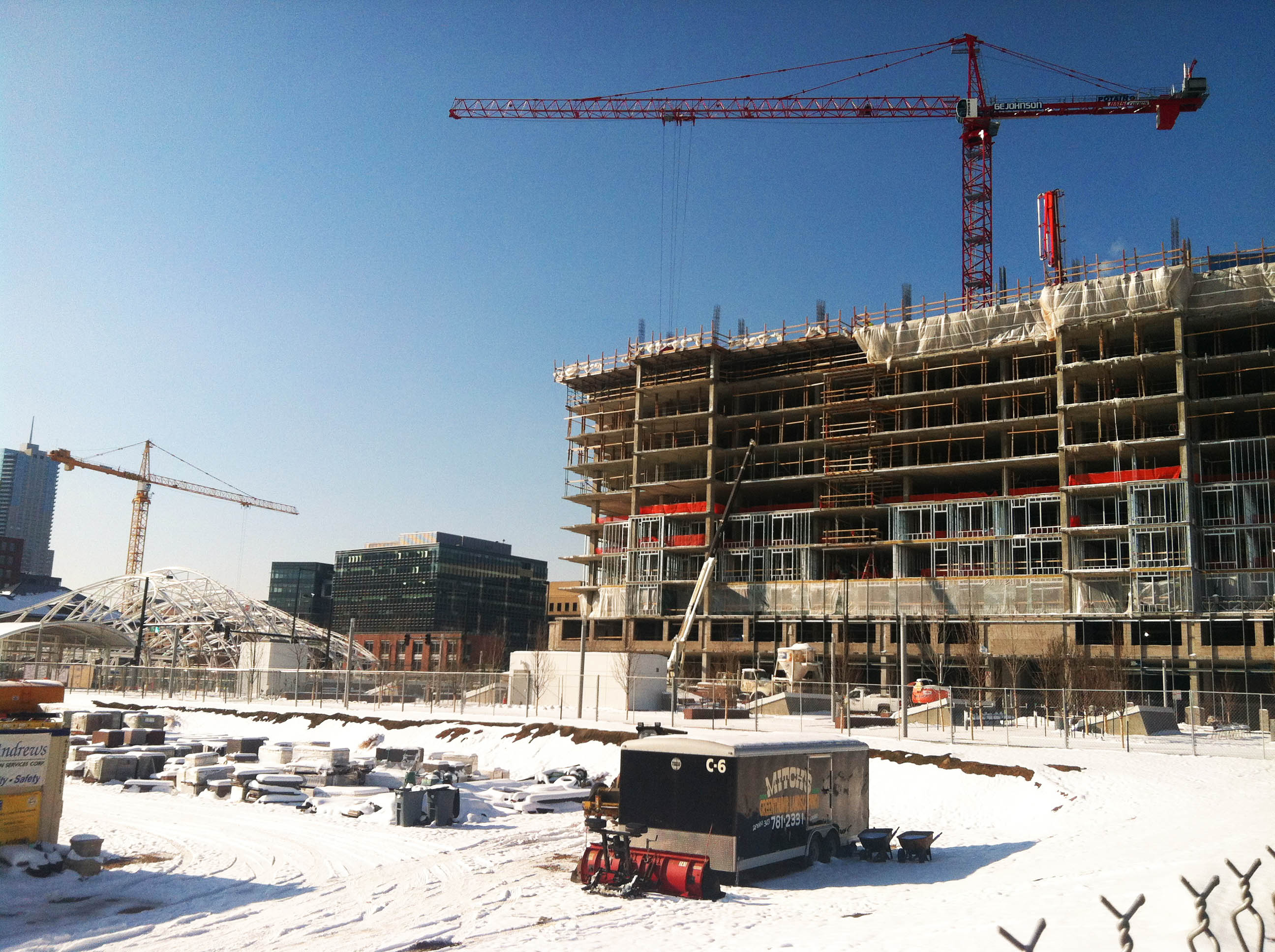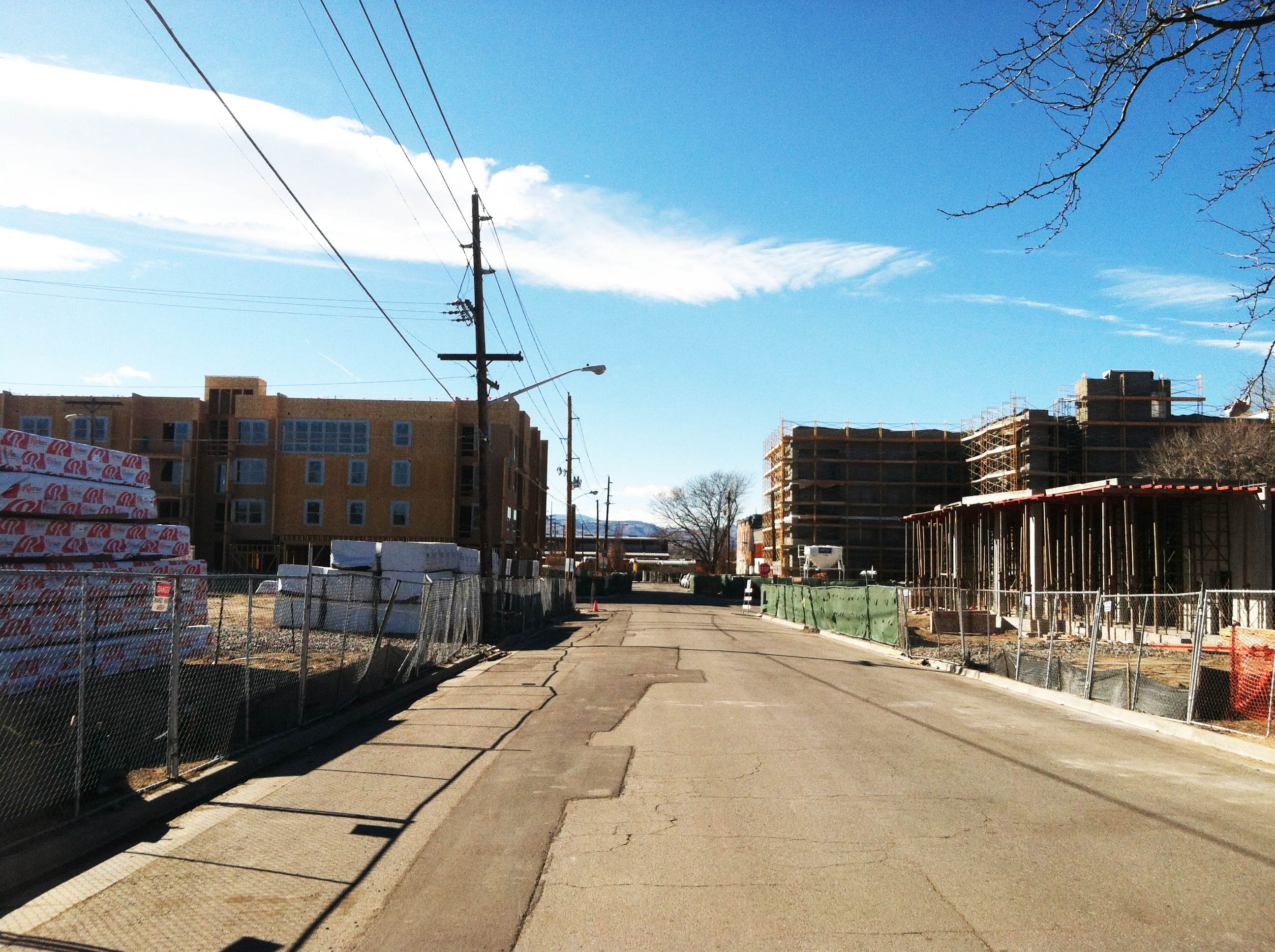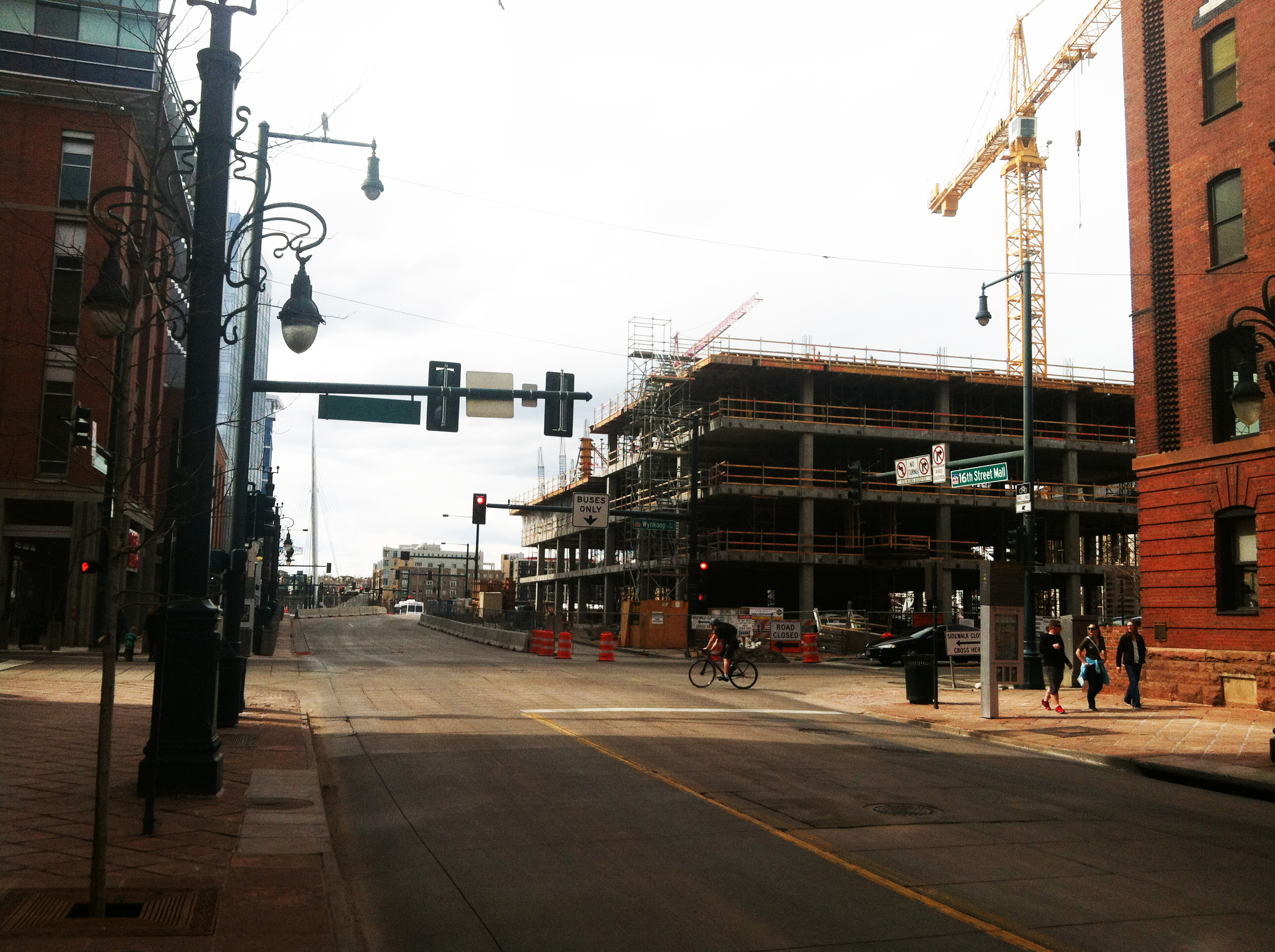T-minus 3 days!!! The West Line is set to open this week and there isn’t one source of local media that has gone without running a story about it. With that said, plenty of naysayers will be ready to point out the inefficiencies and ineffectiveness of the light rail without having ever used it. If you ask five friends if they have ever taken light rail in Denver, chances are that maybe two of them will say yes. The others are likely to give you a sob story about the inconvenience of the system or how it goes no where but the suburbs. While it is a fair argument that the system is not a great resource for navigating every corner of the city, it is still likely that many missed opportunities to use rail occur every day for people who could benefit highly from it. Thus, I would like to supply you with some convincing debate points to retaliate ignorance in any social situation regarding light rail this week. Here are some points to use in convincing your Denver friends that rail is not to be taken lightly:
1. Young People
Young people have been pouring into Denver for the past several years. We have grown a national reputation for being a young, progressive and exciting lifestyle city. This population is important because most young adults are migrating back to cities. Hit hard by the recession, young people are putting off mortgages and car purchases to deal with debts and other expenses. This makes them more eligible candidates for other modes of transportation outside of automobiles. In addition, it makes for more rental construction in the city.
2. Density
Following the previous point, Denver is densifying! Not only are thousands of new residents moving in every year, but thousands of new units are being constructed to accommodate them in the inner core. While these developments are in most every neighborhood, it’s good to note that multiple urban stops on the light rail system have high-density residential projects being constructed or planned on blocks adjacent to the stops. As these locations become increasingly reinforced by denser populations, more people will have direct access to the system. Buildings providing density will likely also incorporate other commercial amenities that people will want to reach…making the stops more destinational.
3. New (and renewed) Neighborhoods
One of the biggest complaints around town about light rail is that the stops do not land people in the places they need to go. Sure, many of the stations land you in seas of parking, in low-density residential neighborhoods or in areas with little activity. It is important to take a moment to consider all of the opportunities available through these circumstances. Of course everyone knows that the Union Station desert is quick becoming a mini Dubai (ok, so maybe that’s a stretch). This will no doubt be the most active stop in the city, but it is one of many stops that have the chance to make themselves from scratch. The 10th/Osage St. station has already made some serious headway in transforming the Lincoln Park neighborhood. Along the West Line, the Sun Valley neighborhood could be undergoing some serious transformation at the Decatur-Federal station. In addition, 38th/Blake St. Station along the East Line has had developers scouting land and opportunities for investment long before its opening.
4. Accessibility and Ease of Use
One giant win for the light rail that can be immediately felt is simply opening more access to the metro area. On April 26th, people in Golden can make the decision to ditch their cars and add to the already increasing number of people using light rail in Denver. Several neighborhoods and communities along the route will begin interacting in a way that was not previously possible. While it is safe to say that not everyone will leave their highway commute for rail, populations which may have struggled to make walking, biking or bussing work in their life now have another option. New populations and constituents will now be invited to contribute to the system’s success. In addition, adding new stations and lines means that this network has a greater value to a greater number of people. And you’ll now be able to ride through credit card payment (while this doesn’t seem like a big deterrent, I have had to forgo using light rail a handful of times because of this issue alone).
At the end of the day, light rail will continue to bloom all around the metro area. With the opening of a new line, the new challenge will be convincing people who are dead set on cars to give it a shot. Denver is already a touch ahead of the nation in its usage of alternative transportation options and this time last year light rail ridership was up almost 4.5% from 2010. Despite that fact, this is our chance to evolve from a player, to a leader. We have to convince a culture that is obsessed with cars to try something different. It’s easy to be a skeptic if you have yet to weigh the other available options. The light rail holds many benefits which can only be experienced by using it first-hand. So while I encourage you to get excited about the future, I challenge you to give light rail a shot. Even if you don’t become a daily commuter, make a conscious effort to take light rail the next time you can….or just ride it for fun!
[Were you shocked, excited or surprised by a great experience using light rail in the past? Keep up the positive light rail karma and share your story with us in the comments section!]















If you want a good, car free, all-day outing from downtown try this:
Pick an off peek travel time to start your journey. Mid mornings are usually good because most traffic is into the city and you will be going outbound.
Load your bike onto the light rail and travel to the Littleton/Mineral stop near Chatfield Reservoir or the Nine Mile stop near Cherry Creek Reservoir.
Take the Marry Carter Greenway or Cherry Creek Trail to the chosen reservoir. Be ready for a bit of an uphill ride or walk your bike, especially approaching Cherry Creek Reservoir.
Chill at the state park a while. Make sure you leave at least an hour and a half for the ride home.
Take the fairly easy bike ride, almost completely downhill, on the Marry carter/South Platte Trail(16 mi) or Cherry Creek Trail(13 Miles) all the way back into Downtown.
It’s funny that you mention younger folks flocking into the city, and then (in a way) scold people for not using rail transit. I live in West Denver. I don’t have a rail station in sight. The nearest bus stops running at 6:00 PM on weekdays, and barely runs at all on weekends. So even on the rare occasions my destination actually is anywhere near transit (meaning: it has to be either be Downtown by bus or on a rail line), it’s incredibly inconvenient. On top of that, the rate for getting to the suburbs by rail is out of this world expensive. I think I’ll just drive.
My wife does take the bus to work, but she works smack dab in the city center. I work fairly close in the Golden Triangle. I can hop the bus downtown, wait 15 minutes for a transfer, and then take a bus that meanders it way to something sort of near work. Since RTD has designed the bus system to basically get people downtown, getting to OTHER neighborhoods in the city is basically impossible. Certainly not in a reasonable time frame (a commute by bus would be more than 3 times longer compared to driving).
So we have a transit “system” that is expensive and inefficient for anyone that lives in the city and would like to move around it with any sort of efficiency. The most extreme example is a bus trip I took to a friends house. He lives 3.8 miles away. I spent more than an hour on a bus, first going Downtown and then back to his house.
We need real transit in Denver. Actual intra-city transit. Instead of focusing on how we move people from Littleton and Highlands Ranch (and now Adams county) into the city, why not focus on actually getting the residents of the city around?
Nick, I know it can be frustrating to wait for a bus out in the inner-ring suburbs and it’s worse further out. But we must keep in mind that those communities were generally built with the car in mind or were once rural areas that had a low-density urban fabric built on top of them. Therefore, getting around by bus and doing errands by bus is less realistic. I do know about this since I grew up in SW Denver. I first rode a city bus in junior high school and that was the 21 on Evans and then I later took the 30, but that was to go downtown. So you are correct, I didn’t do much shopping with that bus but I did use it to get back and forth to the city center. But this is precisely why the construction of a comprehensive light rail system and “multi-modal” transit program will be better for the Denver area in the long run. For those who embrace this sort of growth, the densification of rail corridors will encourage greater use of that system as well as promote more walkable neighborhoods that will have to rely on the car LESS in the future. With more transit choice comes more options of where to live. Right now, the highway-dependent suburbs such as Aurora and Highlands Ranch have been controlling the development patterns for the past 50 years (and their predecessor suburbs before that). Now though, we have a chance to offer real choice for those who don’t want to always have to rely on an expensive car to get around. If a car is one choice among bus, walking, rail, pedicab, etc., and I live in a so-called urban village near a new light rail stop, then I have just challenged the status quo of being forced to buy a car-dependent house in the far-out suburbs. Am I condemning Highlands Ranch–absolutely not. I wouldn’t give up where I grew up for anything. SW Denver was/is great. However, there are different ways of doing things and the newly created transit-oriented development projects that are now going up near many of our train stations bodes well for a more balanced approach to future lifestyle changes, in my humble opinion. I made the radical move to ditch my car after college, some 20 years ago, and have made choices that allow me to live in a less auto-dependent world. I rent a car when I need to (and am now looking into Car Share) and save all my errands for one day. I have worked to create a world where I walk more, bike more and get a lot more excercise than the average person. For me, a walk of 30 minutes is not a big deal but a commute of 30 minutes via car would be unthinkable. While I am lucky to also have a job downtown, I worked for years to make that a reality. I live near most services I need as well. I am certainly not advocating for the density of Chinese cities for Denver, or even on the scale of NYC of San Francisco, but if we are truly going to add a million people to the Denver area over the coming decades, then the creation of a new transit system (that in many cases sits a top the old one that we ripped out 60 + years ago) is yet one more example of how Denver is and always has been looking toward the future. We are a forward-thinking city and I really am happy about that…and happy about the opening of the West Rail Line! Yea!!
I also grew up in Denver (Cory-Merrill), and I’m old enough (cough cough) to remember the legacy bus routes prior to RTD’s massive 1978 reorganization, when they threw out the old routes entirely, and adopted a grid-patterned route system. Prior to that year (I was a junior at South HS and used to take the bus downtown all the time after school), I was able to walk a few short blocks from school to Louisiana and Gaylord to catch a #5, which followed the old DTC streetcar route (it was also the #5 streetcar, prior to 1950). Along the (dog-legged) way it passed numerous business districts, including the area around the Mayan Theater, as well as Denver General Hospital, West HS, and the City & County Building (not to mention the old Denver Wax Museum on Bannock!). Then, coming home, I would board the #5 at California & 15th in front of the Denver Dry Goods, and ride it all the way home, with no transfers. After 1978, I had to walk a lot further to catch the new #13 bus (since discontinued) that followed a straight line to Broadway, then transfer to a new #0 bus for the ride downtown. Coming home, it was the reverse, sometimes catching the new #11 bus which dropped me off a full half mile from my house instead of a half block. Or I could catch the Colfax to Colorado, and transfer at National Jewish (those routes didn’t change, but the numbers did).
RTD would have more bus riders if they’d re-adopt the pre-1978 legacy routes, which, while illogical on paper, actually matched where people wanted to go, and involved fewer transfers.
Nick, I believe other options for intra-city transit are in the works. A lot of your concerns seem to point to the bus system and I can’t say much on that as this post was to focus on light rail. I do not quite understand the relationship between young people moving to the city and yelling at people for not using rail. The idea of this post was not to get everyone to completely rely on light rail. The point is to not completely write it off.
There are a number of destinations that I’m sure you’ve been to in the past year which might have been fully accessible by light rail. It only takes one time to show somebody that this can be an alternative to the car. I tried it once, and now I use it once a week. While I don’t have a car and mostly get around by bike, it is nice to know that it’s another weapon I have in my transportation pocket. Don’t get angry, get excited! While the rail system is not as efficient as you’d like right now, time, cultural shifts and a fully built out system is ahead of us. There’s much to look forward to!